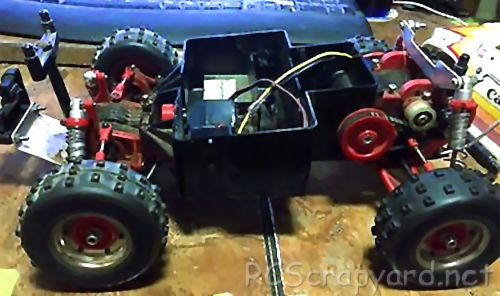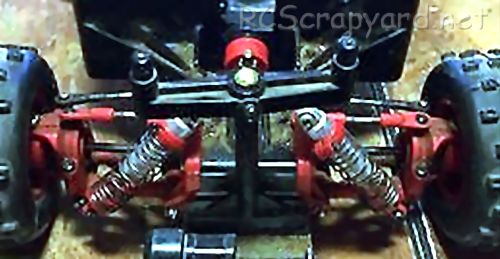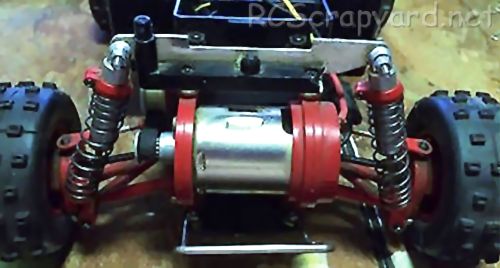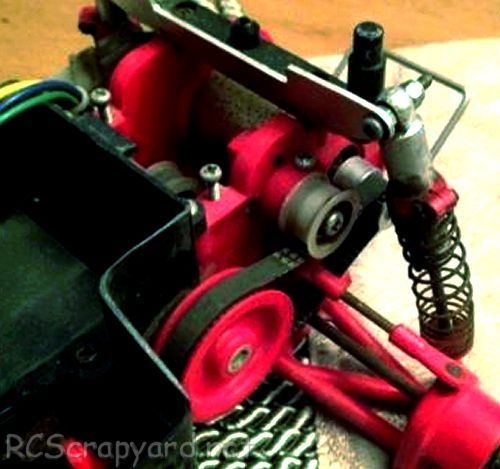

|
|
|


|
|
1/10 Scale Electric Truck/Truggy:
Hirobo Toyota Hilux - 44B - Radio Controlled ModelHistory and Info:
Introduced by Hirobo circa 1984, the 4WD belt driven Toyota Hilux 44B Truck, came with a motor and 3-stage mechanical speed controller.
▼ Scroll Down for More Images ▼
|








|
|
|

★ Hirobo Toyota Hilux Chassis ★

★ Hirobo Toyota Hilux Chassis ★

★ Hirobo Toyota Hilux Chassis ★

★ Hirobo Toyota Hilux Chassis ★

|
Buying a Used Hirobo Toyota Hilux
|
|
Manufacturers and Brands Catalogued, Listed and Reviewed by RC-Scrapyard.
At present, the RC Model Manufacturers, Brands and Distributors covered by us are: ABC Hobby, Academy, Acme Racing, Agama Racing, Amewi, Ansmann Racing, ARRMA, Team Associated, Atomic RC, Axial, AYK, Bolink, BSD Racing, Capricorn, Carisma, Carson, Caster Racing, Cen, Corally, Custom Works, Durango, Duratrax, ECX - Electrix, Exceed RC, FG Modellsport, FS-Racing, FTX, Fujimi, Gmade, GS-Racing, Harm, HBX, Helion, Heng Long, Himoto Racing, Hirobo, Hitari, Hobao, Hong-Nor, Hot Bodies, HPI, HSP, Intech, Integy, Jamara, JQ Products, Kawada, Kyosho, Losi, LRP, Maisto, Mardave, Marui, Maverick, MCD Racing, Megatech, Mugen, New Bright, Nichimo, Nikko, Nkok, Ofna, Pro-Pulse, Protech, PTI, RC4WD, Redcat Racing, RJ-Speed, Robitronic, Schumacher, Seben, Serpent, Smartech, Sportwerks, Step-Up, Tamiya, Team-C Racing, Team Magic, Thunder Tiger, Tomy, Top Racing, Traxxas, Trinity, Tyco, Vaterra RC, Venom, VRX Racing, WLToys, X-Factory, Xmods, Xpress, Xray, XTM, Yankee RC, Yokomo, ZD Racing and Zipzaps. |
|
Hints, Tips and Information How to Charge Rechargeable Batteries for Peak PerformanceNi-Cad (Nickel Cadmium) Batteries
1/ All Ni-Cad Batteries have to be Discharged soon after use. This is to avoid the dreaded "Memory" effect that on subsequent re-charges can cause a momentary drop in performance during a race. A simple discharger can be made from a car 12v bulb.
Ni-Mh (Nickel Metal Hydride) Batteries
1/ Never charge Ni-Mh batteries at a current higher than 4.5 amps. Although these batteries can give a higher voltage than Ni-Cad Batteries, they are much more sensitive and easy to damage if charged too quickly. |
|
Hints, Tips and Information
Choosing a Transmitter
When you first started in RC, you may have purchased a package that came with the car kit, motor, battery, charger, ESC and radio system complete. The transmitter was probably just a basic steer wheel, or stick type, with nothing more than forward, reverse, left, right and simple trim settings to centralise the servo and ESC. |
|
RC Models:
|
Radio & Motors: |
Other
Accessories: |